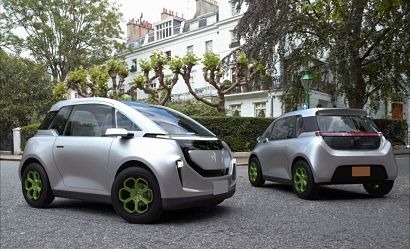
Without the mass adoption of electric vehicles it is unlikely that UK targets for air quality or carbon emissions can be met - something that the BeeAnywhere from MeV Ltd was specifically designed to address. The company has spent the past two years designing and developing a low-cost electric vehicle that can retail at the same price as an average car, for example an 8-year-old hatchback, rather than competing on price with new vehicle.
MeV has combined the expertise of the National Centre for Motorsport Engineering at the University of Bolton with advanced composites from the University of Manchester’s Graphene Engineering and Innovation Centre. The resulting innovative chassis design and composite body allows the vehicles to be assembled from a minimum of parts, significantly reducing production and component costs.
In contrast to other automotive manufacturers whose strategy has been to replicate an existing automobile with an electric power train, the BeeAnywhere has been specifically designed as a two-seat urban vehicle, controlled via the user’s smart phone and with the comfort, range and performance demanded by the urban environment. The company is currently building pre-production vehicles.
“Emissions free transport should not be limited to those who can afford to pay a premium” said Dr Anthony Keating, MeV CEO. “The BeeAnywhere makes electric vehicles affordable, stimulating mass adoption and offers the potential to displace millions of older polluting vehicles, especially if backed by a scrappage scheme.”
MeV Chairman Tim Harper added that for the UK to achieve targets set out in the government’s 2019 Clean Air Strategy there needs to be a rapid switch to electric vehicles and that currently there are no viable alternatives to conventional vehicles at an equivalent price point.
“The targets will not be met simply by charging for entering Ultra Low Emission Zones (ULEZ)” Mr Harper said. “The upcoming COP26 conference gives the government an opportunity to back low carbon innovations and stimulate the creation of new industries.”
For additional information:

